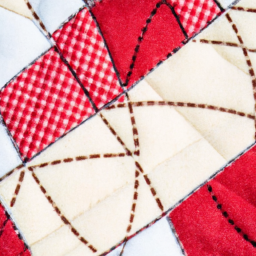
| Quilt Size | Dimension (inches) |
|---|---|
| Baby | 36 x 36 |
| Crib | 45 x 60 |
| Twin | 63 x 87 |
| Full | 78 x 87 |
| Queen | 84 x 92 |
| King | 98 x 98 |
Understanding
Quilting is a beloved craft that allows you to create beautiful, cozy, and functional works of art. One key aspect of designing a quilt is determining its size. Understanding quilt pattern sizes is essential when planning your quilt project and ensures the final result meets your expectations.
Quilts come in various sizes, depending on their purpose and who will be using them. Here are some common quilt sizes and their corresponding dimensions:
- Baby: A baby quilt is typically the smallest size and measures 36 x 36 inches. These quilts are perfect for snuggling infants and make wonderful gifts for baby showers and birthdays.
- Crib: Crib quilts are slightly larger and measure 45 x 60 inches. They are designed to fit standard crib mattresses and create a cozy environment for babies and toddlers.
- Twin: Twin-sized quilts are suitable for single beds and measure 63 x 87 inches. They are a popular choice for children’s and guest bedrooms, providing comfort and style.
- Full: Full-sized quilts are larger and measure 78 x 87 inches. They are an excellent option for double or full-sized beds, offering sufficient coverage and warmth.
- Queen: Queen-sized quilts provide generous coverage on queen-sized beds, measuring around 84 x 92 inches. These quilts add a touch of elegance and coziness to any bedroom.
- King: King-sized quilts are the largest option, measuring 98 x 98 inches. They are perfect for king-sized beds, adding a luxurious and stylish touch to your bedroom decor.
Keep in mind that these sizes may vary slightly depending on personal preferences or specific quilt designs. Additionally, it’s essential to account for any additional drop or overhang to achieve the desired aesthetic and functionality.
Choosing the Right Size for Your Quilt
When selecting a quilt pattern size, consider the purpose of the quilt and the intended recipient. Baby and crib quilts should be smaller for safety reasons, while larger quilts are suitable for larger beds or as decorative throws.
Take into account the quilt’s intended use. If it’s meant for warmth during chilly nights, you may prefer a larger size for better coverage. If you are creating a decorative wall hanging or table topper, smaller sizes might be more appropriate.
Remember that quilt sizes listed here are general guidelines, and you can always adjust them as per your specific needs and preferences.
Conclusion
Understanding quilt pattern sizes is crucial in achieving the desired outcome of your quilting project. Whether you are making a baby quilt, crib quilt, or sized for larger beds, knowing the appropriate dimensions for each size ensures your quilt is functional, attractive, and fits its intended purpose.
So, take the time to measure, plan, and select the right quilt pattern size for your next quilting adventure. Happy quilting!
Sounds interesting!
This is a great topic for quilting enthusiasts! With different quilt patterns available, having information on how to choose the right size is useful to create projects that will look the best.
Yes, I agree it can be difficult to know what size to make everything!
Great post!